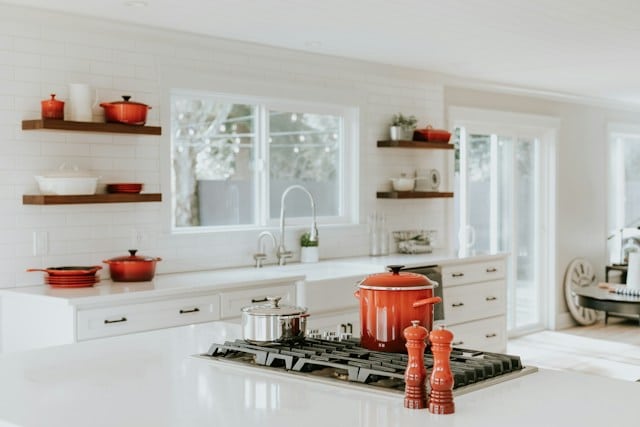What’s the Best Approach for a Self-Sufficient Kitchen Garden in a Semi-Detached Urban Home?

Feeling the gentle crunch of fresh vegetables from your garden is a sensation quite like no other. How satisfying it is, knowing that the food you place on your table is the fruit of your labor. This satisfaction is what makes kitchen gardens a lifestyle many people aspire to, even while living in semi-detached urban homes.
But how does one start and maintain a self-sufficient kitchen garden in such restricted spaces? What plants should you grow, and how should these plants be catered to in different soils? The key lies in understanding the nature of gardening, and tailoring this knowledge to your own unique home environment. Let’s break it down.
A découvrir également : How to Plan a Water Harvesting Landscape for a Dry Climate Backyard?
Selecting the Right Plants for the Space You Have
Space is a luxury you don’t have when living in a semi-detached urban home.
Yet, this should not deter you from growing a variety of crops. You just need to be vigilant in selecting plants that fit best in small spaces and those that can thrive in close proximity with other plants.
To start, you can consider vertical gardening, a method that optimizes the use of vertical space. Vining plants like tomatoes, cucumbers, and beans are perfect for this setup. You can also grow leafy greens like spinach and lettuce which require less space, and root vegetables like radishes and carrots that take advantage of the depth of the soil.
Sujet a lire : What Are the Best Solar Panel Options for a Small Roof in a Cloudy Region?
Don’t forget about herbs too. They’re small, easy to grow, and can significantly enhance the flavors of your home-cooked meals. Basil, rosemary, parsley, and chives are just a few examples.
Understanding the Soil and Watering Needs
The foundation of a successful garden lies in the quality of the soil. It provides the necessary nutrients and water for the plants to grow. Therefore, understanding your soil type is crucial.
There are three primary types of soil: sand, silt, and clay. Sandy soil is fast-draining but low in nutrients, while clay soil is rich in nutrients but has poor drainage. Silt, on the other hand, is a good balance of both. Depending on the type of soil in your garden, you will need to amend it with organic matter like compost or manure to improve its fertility and water-holding capacity.
Water is also a critical factor in gardening. Each plant will have different watering requirements, and providing just the right amount can mean the difference between a flourishing garden and a withered one. A general rule of thumb is to keep the soil consistently moist but not waterlogged.
Timing Your Crops for Year-Round Harvest
Timing your crops correctly can provide you with a year-round harvest. This is particularly important for small gardens, where space is limited.
In early spring, you can start with cold-tolerant crops like peas, lettuce, and spinach. As the weather warms up, you can plant warm-season crops like tomatoes, peppers, and cucumbers. Come fall, it’s time for cool-season crops again.
You can also make use of succession planting. This is the practice of growing one crop right after another has been harvested, maximizing the productivity of your garden throughout the year.
Managing Pests and Diseases
A healthy plant is your best defense against pests and diseases. However, even with the best care, problems can still arise. Prevention is always better than cure, so it’s essential to keep an eye out for the early signs of infestation or disease.
Common pests in the garden include aphids, slugs, and caterpillars. Diseases could be fungal, bacterial, or viral. If you spot any of these, don’t panic. There are many organic solutions available, from insecticidal soaps to homemade sprays. You can also attract beneficial insects like ladybugs and praying mantis, which are natural predators of many common garden pests.
Embracing the Gardening Lifestyle
Gardening is not just an activity, but a lifestyle. It requires constant learning, observation, and adjustment. But it’s the process that makes it worthwhile, not just the end goal of having fresh food on your table.
So, enjoy every moment of it, from the first sprout breaking through the soil to the last harvest of the season. Every difficulty encountered is a learning opportunity, and every success is a moment to celebrate.
Remember, there’s no one-size-fits-all approach to gardening. What works for others may not work for you, and that’s okay. The journey to a self-sufficient kitchen garden in a semi-detached urban home may be challenging, but it’s certainly possible, and definitely rewarding.
Making the Most of Your Available Space
In urban settings, space often poses a major challenge. The average semi-detached home may not have a sprawling backyard, but that doesn’t mean you can’t have a productive and self-sufficient kitchen garden. With creativity and clever use of space, your garden can become both functional and aesthetically pleasing.
Raised beds are an excellent solution for making the most of your limited space. With a compact footprint and well-defined boundaries, raised beds allow for intensive planting. This means you can fit more crops into a smaller area, leading to higher yields per square foot.
Another strategy is to utilize containers. Container gardening allows you to grow a wide variety of plants in pots, boxes, or barrels, which can be placed on patios, balconies, or rooftops. Remember to choose containers that are large enough to accommodate your plants’ roots and have proper drainage holes.
In addition to vegetables, consider integrating fruit trees into your landscape. Dwarf or semi-dwarf varieties are ideal for small spaces. An apple tree, for instance, can provide shade and privacy, while also producing a bounty of fresh fruit each growing season.
Remember, every inch of space in your garden is precious. So, plan your garden layout carefully, taking into account factors like sunlight exposure, ease of access, and compatibility between different plants.
Closing the Cycle: Composting and Sustainability
In the pursuit of self-sufficiency, one must not overlook the importance of organic matter in maintaining soil fertility. Composting is a sustainable way to recycle kitchen scraps and garden waste into nutrient-rich organic matter.
To start composting, designate a corner in your garden for a compost pile or bin. Alternating layers of green materials (like vegetable scraps and grass clippings) and brown materials (like leaves and straw) will create a balanced compost mix.
Over time, these materials will break down into compost, a valuable soil amendment that improves soil structure, boosts fertility, and enhances water retention.
Implementing sustainable practices like composting not only brings you one step closer to self-sufficiency but also contributes to food security and environmental conservation.
Conclusion
Embarking on the journey to a self-sufficient kitchen garden in a semi-detached urban home may seem daunting, but with careful planning, patience, and a willingness to learn, it is definitely achievable.
From understanding the soil and choosing the right crops, to maximizing your space and closing the cycle with composting, every step brings you closer to the joy of harvesting your own food fresh from your garden.
Remember, it’s not just about food production. It’s about embracing a lifestyle that reconnects you with nature, promotes health and wellness, and cultivates a sense of self-sufficiency. And that, in itself, is a reward worth striving for.
Image Credit: Leigh Clapp
(Note: For more information, consult resources like Google Scholar for academic articles on urban gardening and self-sufficiency. Use the keywords provided above for effective search results.)
